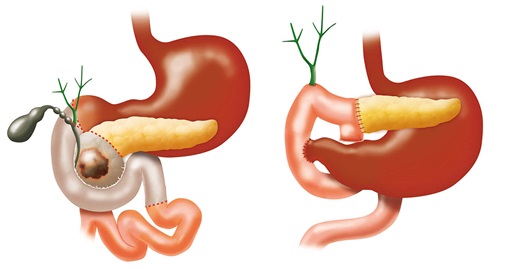Whipple Procedure

The Whipple procedure (also called a pancreaticoduodenectomy) is the primary surgical treatment for pancreatic cancer that occurs within the head of the gland. During this procedure, surgeons remove the head of the pancreas, most of the duodenum (a part of the small intestine), a portion of the bile duct, the gallbladder and associated lymph nodes. In some cases, the surgeon may remove the body of the pancreas, the entire duodenum and a portion of the stomach. On average, the surgery takes six hours to complete. Most patients stay in the hospital for one to two weeks following the Whipple procedure.
The Whipple Procedure | Johns Hopkins Medicine
The type of operation performed for removal of pancreatic cancer is based on the location of the tumor. For tumors of the head and neck of the pancreas a Whipple procedure, (also called a pancreaticoduodenectomy) is performed. This is a complex operation perfected at Johns Hopkins. This video will explain the surgery and what patients can expect.






